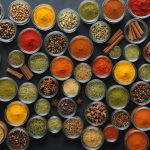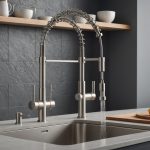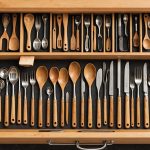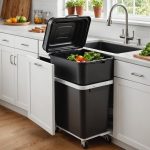When it comes to slicing bread, the right tool can make all the difference. A serrated bread knife effortlessly glides through crusty exteriors while preserving the soft interior, making it the ideal choice for various types of bread. The unique design minimizes squashing and tearing, resulting in clean, even slices. This guide reveals the key benefits of opting for a serrated knife over a straight blade, ensuring your baking creations receive the delicate handling they deserve. Discover how this simple switch can elevate your kitchen experience.
Advantages of Serrated Bread Knives
Serrated bread knives are a staple in kitchens due to their unique design and functionality. Unlike straight blade knives, serrated knives feature a toothed edge that resembles a saw. This design allows them to grip and slice through tough surfaces, making them particularly effective for cutting bread.
Also to see : Ultimate Guide to Selecting a Vacuum Sealer for Long-Lasting Freshness: Keep Your Food Fresh for Months!
Key Benefits for Bread Cutting
One of the primary advantages of serrated knives is their ability to cut through crusty bread without crushing the soft interior. The serrated edges create less friction, allowing for a cleaner cut. This makes them ideal for slicing through hard crusts and soft interiors with precision.
Comparison with Straight Blade Knives
When comparing serrated bread knives to straight blade knives, the former offers distinct benefits. Straight blades often struggle with tough, crusty surfaces, leading to uneven cuts and squashed bread. In contrast, serrated knives maintain their sharpness longer and require less frequent sharpening, providing a consistent performance over time.
Additional reading : Ultimate guide to selecting ideal cookware for delicious roasted vegetables
In summary, the serrated bread knife benefits include efficient cutting, maintaining the integrity of soft bread interiors, and long-lasting sharpness. These features make them an essential tool for anyone who frequently works with bread, offering precision and ease not found in straight blade knives.
Clean Cuts with Serrated Knives
Achieving clean cutting bread is a hallmark of serrated knife efficiency. The unique toothed design of these knives allows them to slice through various bread types with minimal effort. This results in aesthetically pleasing, uniform slices that enhance presentation, whether for a casual meal or a formal event.
Serrated Edges and Cut Quality
The serrated edges play a crucial role in delivering precise cuts. By reducing friction, these knives glide through crusty exteriors while preserving the delicate crumb inside. This is particularly important for maintaining the bread's shape and texture, ensuring each slice is as visually appealing as it is tasty.
Practical Examples with Different Bread Types
Consider slicing a crusty baguette or a soft brioche. A serrated knife's efficiency shines with both: it effortlessly handles the tough crust of a baguette, providing clean cuts without flattening the loaf. Similarly, it smoothly slices through a brioche's soft, airy interior, preserving its delicate structure. This versatility makes serrated knives indispensable for any kitchen, meeting the needs of both amateur cooks and professional chefs alike.
Minimizing Squishing and Crumbling
When it comes to cutting bread, minimizing squished bread and avoiding bread crumbles are common challenges. The design of serrated bread knives plays a significant role in overcoming these issues.
Explanation of Squishing in Bread Cutting
Squishing occurs when a knife exerts too much pressure on the bread, compressing its soft interior and altering its texture. This often happens with straight blade knives, which can struggle to penetrate the crust without pressing down heavily.
How Serrated Knives Prevent Damage to Bread Texture
Serrated knives, with their saw-like edges, excel in minimizing squished bread. The teeth grip the bread's surface, allowing for a gentle sawing motion that requires less downward force. This technique ensures the bread maintains its original shape and texture, avoiding unnecessary crumbling.
User Experiences and Testimonials
Users frequently highlight the effectiveness of serrated knives in preserving bread quality. Many report that these knives allow them to cut through loaves with ease, maintaining the bread's fluffiness and structure. Testimonials often mention the satisfaction of achieving perfect slices without the frustration of squished interiors or excessive crumbs, reinforcing the knife's essential role in the kitchen.
Ease of Use on Crusty Bread
Cutting crusty bread can be a daunting task, especially with straight blades. These knives often struggle to penetrate the hard crust, requiring excessive force that can lead to uneven slices and crushed interiors. This is where the ease of use of a serrated knife becomes evident.
How Serrated Knives Handle Tough Crusts Effectively
The serrated knife excels at cutting crusty bread due to its saw-like edge. This design allows the knife to grip the crust, making it easier to slice through without exerting too much pressure. The teeth of the serrated blade work like a series of small points that puncture the crust, allowing for a smooth, controlled cutting action. This method preserves the bread's structure, ensuring clean, even slices.
Tips for Using Serrated Knives on Different Bread Types
- Angle the knife slightly to maximize contact with the crust.
- Use a gentle sawing motion to reduce pressure on the bread.
- Allow the knife to do the work; avoid pressing down hard.
By following these tips, users can enhance the ease of use of their serrated knives, achieving perfect slices of crusty bread with minimal effort.
Versatility of Serrated Knives
Serrated knives are not just versatile kitchen knives for bread; they excel in various culinary tasks. Their serrated knife uses extend beyond slicing loaves, making them indispensable in any kitchen.
Other Foods that Benefit from Serrated Knives
Serrated knives are ideal for slicing tomatoes, citrus fruits, and even cakes. The toothed edge grips slippery skins, allowing for precise cuts without squishing the soft insides. This makes them perfect for delicate items that require a gentle touch.
Comparison with Other Types of Specialty Knives
While straight knives may struggle with tough skins or soft interiors, serrated knives handle these challenges with ease. Compared to paring knives, serrated blades offer more control over slippery surfaces. Unlike chef's knives, they maintain sharpness longer, reducing maintenance.
Recommendations for Multi-Purpose Serrated Knives
For those seeking a multi-functional tool, consider a serrated knife with a medium-length blade. This size offers flexibility, from cutting sandwiches to carving roasts. Look for a comfortable handle to ensure a steady grip, enhancing control during use. A versatile serrated knife can simplify many kitchen tasks, proving its worth beyond bread slicing.
Common Misconceptions About Serrated vs. Straight Blades
Understanding the differences between serrated and straight blades can dispel common knife misconceptions. A prevalent myth is that serrated knives require frequent sharpening. In reality, their design allows them to maintain sharpness over extended periods, unlike straight blades which need regular honing.
Debunking Myths About Knife Sharpness and Maintenance
It's often assumed that serrated knife myths involve them being difficult to sharpen. While they do require special tools, the need for sharpening is infrequent. Straight knives, however, demand consistent maintenance to stay effective.
Clarifying When to Use Each Knife Type
Choosing the right knife involves understanding their specific uses. Serrated knives excel in cutting through tough exteriors and soft interiors, making them ideal for bread and tomatoes. Straight blades, on the other hand, are perfect for tasks requiring precision, such as slicing meats and vegetables.
Insights from Culinary Experts
Culinary experts emphasize the importance of using the right tool for the task. They highlight that knife misconceptions often lead to improper use, affecting efficiency and results in the kitchen. Understanding these differences ensures better performance and prolongs the life of your knives.
Care and Maintenance of Serrated Bread Knives
Proper serrated knife care is essential for maintaining their performance and longevity. Unlike straight blades, serrated knives require specific attention to ensure they remain effective.
Best Practices for Cleaning and Maintaining Serrated Knives
To keep your serrated knife in top condition, always hand wash it after use. Avoid dishwashers as the harsh detergents and high temperatures can damage the blade. Gently clean the knife with warm, soapy water and a soft cloth, ensuring you avoid the serrated edges to prevent injury. Dry the knife thoroughly to prevent rusting.
Importance of Regular Sharpening
While serrated knives maintain their sharpness longer, regular sharpening is still crucial. This ensures the knife continues to slice efficiently through tough crusts and soft interiors. Sharpening should be done with a specialized tool, such as a ceramic rod, to match the blade's unique edge.
Tools and Techniques for Knife Care
Invest in a knife maintenance kit that includes a ceramic rod and honing oil. Use the rod by inserting it into each serration, gently sliding it back and forth to sharpen. This technique maintains the blade's integrity without dulling the serrated edges, ensuring your knife remains a reliable kitchen tool.
Product Recommendations for Serrated Bread Knives
Choosing the best serrated bread knives requires understanding key features and evaluating product reviews. These knives are essential for achieving clean cuts and maintaining bread quality.
Overview of Top Serrated Bread Knives
Several top-rated serrated bread knives stand out in the market. They are distinguished by their superior construction, ergonomic handles, and sharp, durable blades. Notable brands often mentioned in product reviews include Wüsthof, Victorinox, and Zwilling. These brands are praised for their precision and longevity, making them favourites among both home cooks and professional chefs.
Key Features to Look For
When selecting a serrated knife, consider the blade length and material. A blade around 8 to 10 inches is ideal for versatility. Look for high-carbon stainless steel for durability and rust resistance. An ergonomic handle ensures comfort during prolonged use, reducing hand fatigue.
Price Range and Value Comparisons
The price of serrated bread knives varies widely, typically ranging from £20 to over £100. While higher-priced knives often offer superior craftsmanship and materials, many mid-range options provide excellent value. Comparing product reviews can help identify knives that balance quality and cost, ensuring you choose a knife that meets your needs and budget.
User Experiences and Reviews
Understanding serrated knife reviews can offer valuable insights into their performance and user satisfaction. Many users report high satisfaction with serrated knives, particularly praising their ability to handle tough crusts and soft interiors with ease. This feedback highlights the knife's precision and efficiency, making it a preferred choice over straight blades for bread cutting.
Compilation of User Feedback on Serrated Knives
Users frequently commend the serrated knife for its long-lasting sharpness and minimal maintenance needs. They appreciate how these knives maintain their edge longer than straight blades, reducing the frequency of sharpening. This durability is a significant factor in user satisfaction, as it ensures consistent performance over time.
Comparing User Satisfaction with Serrated vs. Straight Knives
In comparing user experiences, serrated knives often receive higher ratings than straight knives for bread cutting tasks. Users note that straight blades tend to crush the bread, while serrated knives provide clean, even slices. This distinction is crucial for those who prioritize presentation and texture in their culinary endeavours.
Real-Life Scenarios Illustrating Knife Performance
In real-life scenarios, such as slicing a freshly baked sourdough loaf, serrated knives excel. Users describe how the knife's toothed edge effortlessly pierces the crust, preserving the loaf's soft interior. These experiences underscore the practical benefits and versatility of serrated knives in everyday kitchen tasks.
Conclusion: Making the Right Choice
Choosing the right knife is crucial for enhancing your kitchen experience. When considering serrated vs straight blade options, it's essential to weigh their advantages against your specific needs. Serrated knives excel in cutting through tough exteriors and soft interiors, offering precision and ease of use. They maintain sharpness longer, reducing maintenance efforts compared to straight blades.
Reflect on your cooking habits and the types of foods you frequently prepare. If you often work with crusty breads, tomatoes, or citrus fruits, a serrated knife might be the ideal choice. For tasks requiring precise slicing, such as meats and vegetables, a straight blade could be more suitable.
Ultimately, the right knife can significantly impact your culinary efficiency and enjoyment. Consider investing in both types to cover a wide range of kitchen tasks. By understanding the strengths of serrated vs straight blade knives, you can make informed decisions that enhance your cooking experience. Remember, the best knife is one that aligns with your preferences and meets your kitchen demands, ensuring you achieve the best results with every slice.











